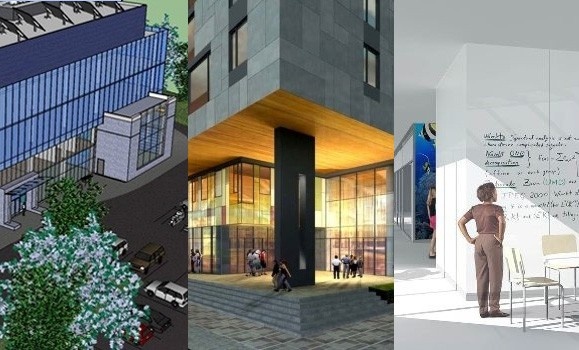This is part one of a two-part story. You can read the second part, covering campus renovations and maintenance work, .
At this time of year, it's hard to turn a corner on campus without seeing piles of snow-covered dirt being excavated, or heaps of construction materials.
Though it’s not always easy to see when quickly passing by, each of these tells a story: a narrative about how campus is poised to look one, three or even 50 years from now. These stories involve Dal’s past — keeping its historic buildings safe and functional — and its future, with new spaces for teaching and learning, residence and research.
With the new year in full swing, we reached out to Dal’s projects team within Facilities Management to dig a little deeper into those piles of dirt and share some of their stories.
See also:
Setting the stage: Understanding deferred maintenance
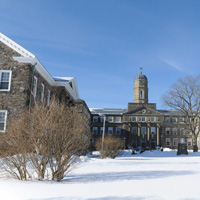 When an organization postpones maintenance activities in order to save money or to focus on higher-priority projects, the backlog is referred to as “deferred maintenance.”
When an organization postpones maintenance activities in order to save money or to focus on higher-priority projects, the backlog is referred to as “deferred maintenance.”
Any organization with a lot of older buildings is bound to accumulate some deferred maintenance, and it’s a particular challenge in universities: most university infrastructure in Canada dates to the 1960s and 70s and often struggles to meet the needs of a today’s students and researchers. (A 2009 report estimated that Canada’s universities have a total maintenance backlog of $5.1 billion – half of which is considered urgent.)
To support improving Dal’s existing buildings, the Board of Governors has committed to increasing the deferred maintenance budget by $1 million annually, up to a cap of $30 million — an amount that would prevent further deterioration of university structures.
Once this cap is reached, the challenge will be to determine what levels of attention should be given to which buildings and how the annual budget will be allocated. The university currently uses three criteria to allocate its facilities renewal budget: building condition, importance of the building to H���� and return on investment.
Current capital projects
In some cases, the most efficient and affordable solution to the university’s space needs is to raise funds from a variety of sources and invest in new facilities.
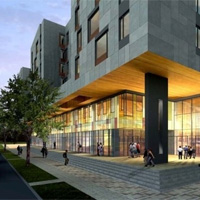 LeMarchant Street Mixed Use Building
LeMarchant Street Mixed Use Building
Across the street from Risley Hall residence is the future site the LeMarchant Street Mixed Use Building. Due to open its doors in 2014, the building will have seven floors, five of them dedicated to residence space to house more than 300 students – necessary as Dal continues to attract more out-of-province and international students. The bottom two floors will be home to a variety of student services, including the Black Student Advising Centre, International Student and Exchange Services, a Recruitment and Enrolment Centre, Health Services and Counseling Services. The building is targeting LEED Gold certification.
- Building size – 165,000 square feet
- Cost - $48 million
- Projected completion date – Spring 2014
- Architects - DSRA Envision with Zeidler Partnership Architects
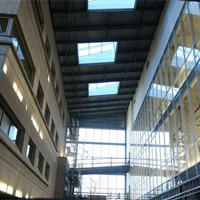 H���� Ocean Sciences Building
H���� Ocean Sciences Building
Connected to the west wing of the Life Sciences Centre (LSC), the H���� Ocean Sciences Building will house Dal’s large-scale ocean projects. It will be home to H����’s Canada Excellence Research Chair (CERC) in Ocean Science and Technology, Doug Wallace, and his team – a $10M federally-funded project that will act as a bridge between the marine research community, the private sector and policy-makers, providing the best possible tools and scientific information for making informed decisions about our oceans. Between researchers, post-docs, students and support, the chair will add dozens of positions to the university’s research capacity, many of them housed in the building.
The H���� Ocean Sciences Building will also feature offices and labs for the Ocean Tracking Network, offices for the Halifax Marine Research Institute, an expansion of the Aquatron seawater tank research facility, space dedicated to the Marine Environmental Observation, Prediction and Response Network (MEOPAR), and one-and-a-half floors of shelled space for future research expansion. The majority of construction has been completed, with next steps being the installation of elevators and platforms, completion of glazing and interior finishes. The building is expected to be completed by May 2013, and is targeting LEED Silver certification.
- Building size – 76,000 square feet
- Cost - $41.5 million
- Projected completion date – May 2013
- Architects - Duffus Romans Kundzins Rounsefell Architects Ltd.
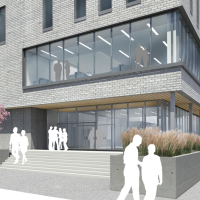 Collaborative Health Education Building (CHEB)
Collaborative Health Education Building (CHEB)
Students of the Faculties of Dentistry, Medicine and Health Professions will be brought together in this new five-story building, becoming part of a connected campus of classrooms, labs and seminar rooms for all health professions. The vision is to provide an environment to educate students in the health professions through an integrated and interprofessional approach so they learn about each other’s approach to the health profession and collaboratively placing the patient at the centre of care.
The CHEB will be located at the corner of Summer Street and University Avenue and joined to the Tupper Link by a pedway. The CHEB will be home to the Kellogg Library Learning Commons and is targeting LEED Gold certification.
- Building size – 69,439 square feet
- Cost - TBD
- Projected start date – March 2013
- Projected completion date – Fall 2015
- Architects - Barrie & Langille of Halifax in association with Moriyama & Teshima and Education Consultants Services
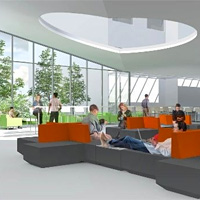 Wallace McCain Learning Commons
Wallace McCain Learning Commons
The Wallace McCain Learning Commons is the latest renovation planned for the Life Sciences Centre (LSC) in its ongoing upgrade, and is one of the four proposed learning commons from the Hub concept in H����’s Campus Master Plan. The commons will be located in the space between the Biology, Oceanography and Psychology wings on the third floor of the LSC. It will provide a space for students, faculty, staff and the surrounding community to come together and mingle, study and learn.
The construction start date is yet to be confirmed, recognizing the complexities and challenges associated with building above and adjacent to an existing building. ()
 Arena site and athletics facilities
Arena site and athletics facilities
The former site of the Memorial Arena is part of a larger construction site for the LeMarchant Mixed-Use Building, and currently hosts 53 temporary parking spots (general Dal permits required).
A request for proposals to secure planning and design services for a new ice arena, new fitness facilities and renewal of the Dalplex resulted in a successful bid from Halifax architects Fowler Bauld & Mitchell Ltd., in partnership with Toronto-based MacLennan Jaunkalns Miller Architects (MJMA). H���� is also in the early stages of investigating an opportunity to partner with Saint Mary’s University on a shared arena, given that both universities are looking for new facilities.
This week, H���� is hosting consultation sessions with students and Dalplex members identifying needs and wants for new athletic and recreation facilities. (More info: , )
Part two: In the , we look at maintenance and renovation projects on campus, including Dal’s lighting retrofit and work on classrooms and campus accessibility.
For more, visit the .

